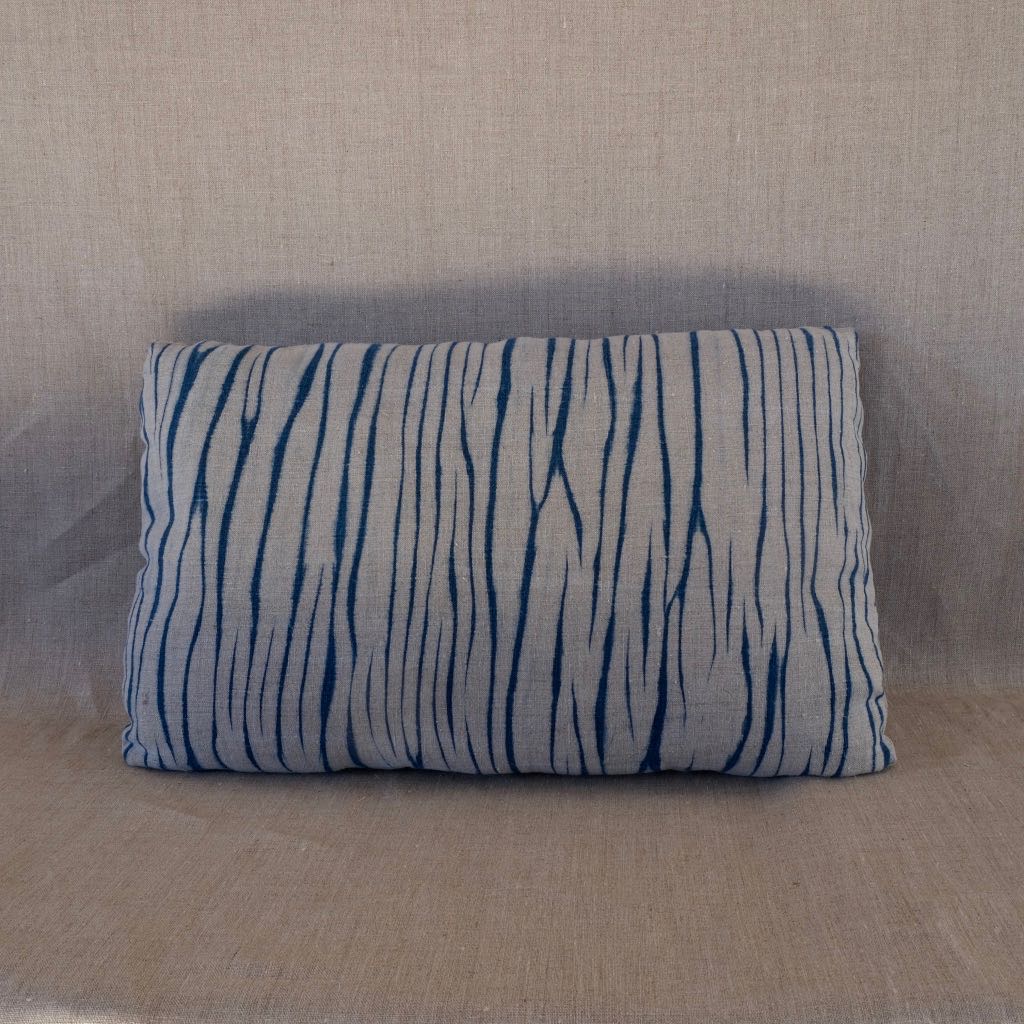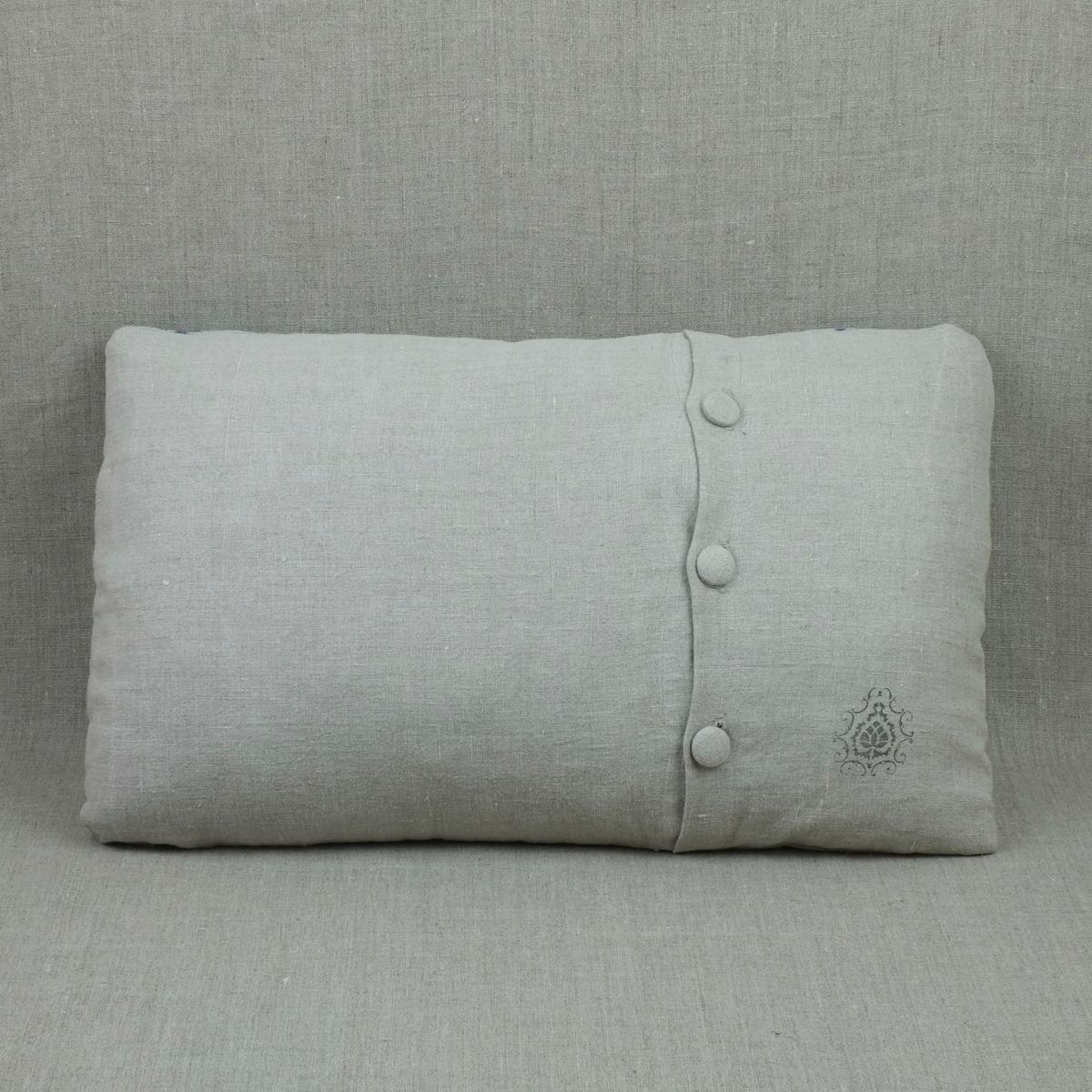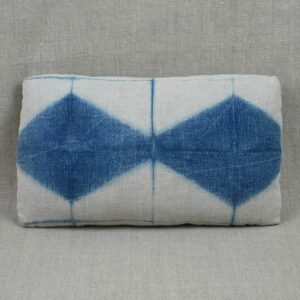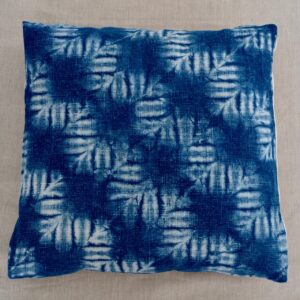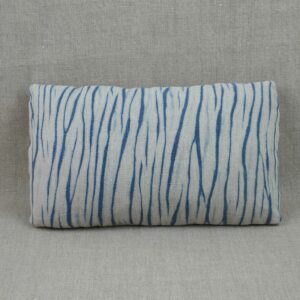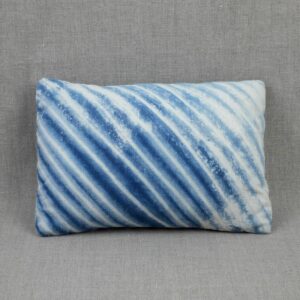Indigo arashi shibori cushion cover
100% linen cushion cover.
Approximatively 36 x 57 cm (pictured with a stuffing size 40 x 60)
Front: indigo arashi shibori technique
See indigo dyeing process here
See arashi shibori process here
Back: linen, button opening
95.00€
Please feel free to contact me to inquire about stocks or place an order:
contact@meiline.fr

